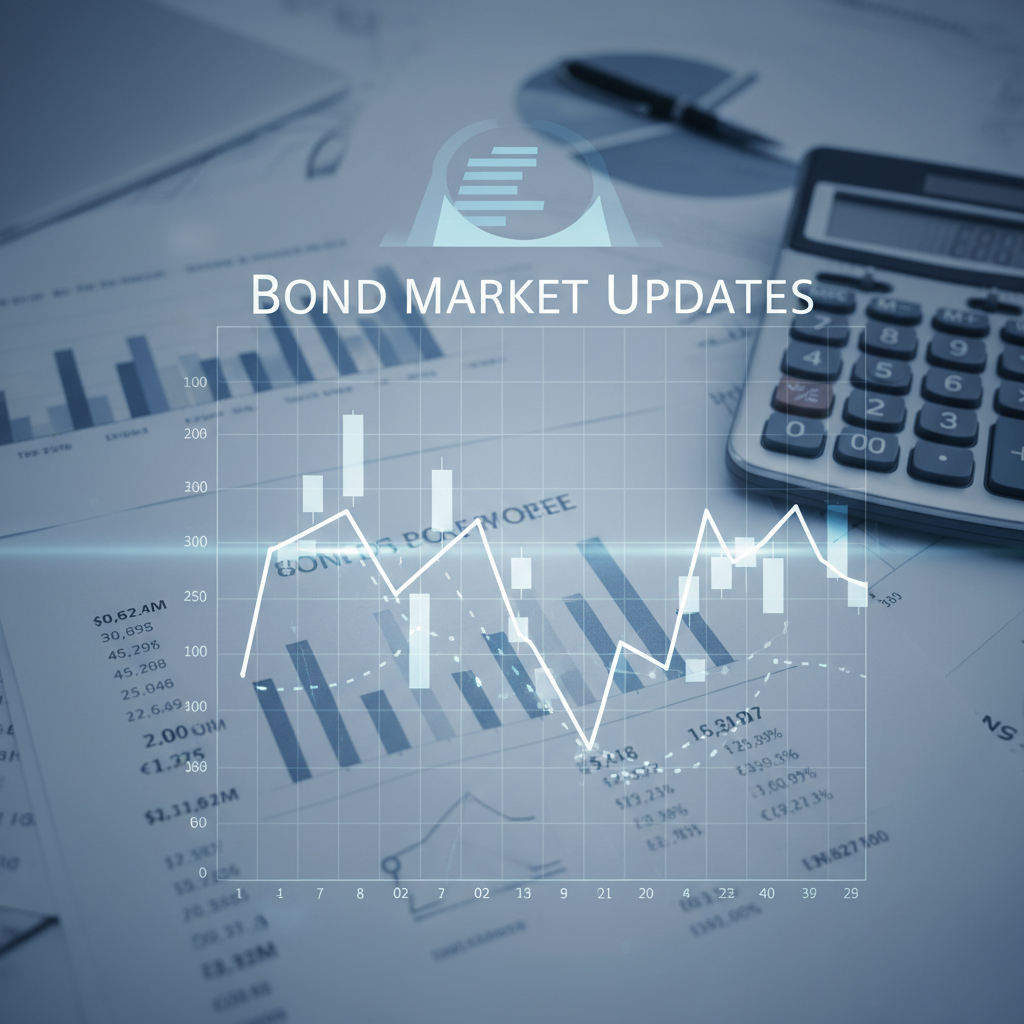US Treasury Yield Trends in 2025
The US Treasury yields in 2025 have been shaped by multiple factors, mainly the Federal Reserve’s monetary policy, inflation trends, and global market conditions. Changes late in 2024 set the tone with notable yield increases.
Moreover, the yield curve flattened significantly as the 10-year Treasury yield rose by approximately 40 basis points. This shift reflects market expectations about economic growth and interest rate paths moving forward.
Impact of Federal Reserve Monetary Policy
The Federal Reserve’s policy stance remains a major driver of Treasury yield movements in 2025. Its decisions on interest rates signal future economic conditions and influence investor confidence.
Recent Fed communications suggest a patient approach, with steady rates expected and potential rate cuts later. This guidance has supported investment grade bonds but also introduced volatility amid uncertainty.
Market participants closely watch Fed announcements, as any shift can cause immediate yield reactions, reflecting the critical role of monetary policy in shaping fixed-income markets this year.
Comparison of Short-term and Long-term Yield Movements
Short-term Treasury yields, such as 2-year bonds, have experienced more volatility due to sensitivity to economic data and Fed policy expectations. These yields adjust quickly to short-term outlook changes.
Long-term yields, spanning 10 to 30 years, have shown less immediate responsiveness, focusing more on long-run economic growth and the neutral real interest rate, which remains elevated compared to pre-Covid levels.
Yield Curve Flattening
The divergence in short- and long-term yield behavior has contributed to a flattening yield curve, signifying mixed market signals about economic expansion and interest rate trajectory in 2025.
Global Bond Yield Developments
In 2025, global bond yields witnessed notable increases, particularly in Europe and emerging markets. These movements reflect a complex mix of economic factors, including inflation and monetary policies.
The rise in yields globally signals investors’ response to shifting economic conditions and risk perceptions, influenced by both regional and international developments.
Yield Increases in Europe and Emerging Markets
Europe experienced significant upward pressure on bond yields, with Germany’s 10-year yield increasing by about 28 basis points. This rise underscores changing expectations for growth and inflation in the region.
Emerging markets, such as Brazil, faced even sharper yield climbs, with increases reaching around 175 basis points. Higher yields reflect greater risk premiums amidst economic uncertainties and inflation concerns in these countries.
Investors are recalibrating portfolios to balance opportunities offered by higher yields against the risks of geopolitical tensions and economic volatility prevalent in emerging markets.
Variations in Regional Economic Influences
Regional economic influences vary widely, affecting bond yields differently across markets. European yields respond strongly to ECB policies and inflation trends, while emerging markets grapple with domestic fiscal challenges and capital flows.
Economic growth prospects in each region also shape yield trajectories, with some areas demonstrating resilience and others facing headwinds from global trade disruptions or commodity price fluctuations.
This diversity in economic conditions leads to heterogeneous yield movements, requiring investors to carefully assess region-specific risks and opportunities.
Effect of Inflation and Geopolitical Events
Inflation remains a key driver of bond yields globally. Persistent inflationary pressures result in higher yields as investors demand compensation for diminished purchasing power over time.
Geopolitical events, such as trade tensions and conflicts, have heightened uncertainty, pushing yields upward due to risk aversion and demands for higher returns amid market volatility.
The interplay of inflation and geopolitics creates a dynamic environment where bond yields fluctuate in response to evolving expectations about economic stability and policy interventions.
Bond Market Sentiment and Investor Behavior
In 2025, bond market sentiment is characterized by a blend of caution and opportunism. Investors remain vigilant amid economic uncertainties and Fed signals.
This cautious optimism is driven by moderate inflation and expectations of monetary policy easing, encouraging selective investments in bonds.
Cautious but Opportunistic Market Outlook
Investors are approaching the bond market with care, mindful of volatility and geopolitical risks. Yet, they seek opportunities in quality bonds amid fluctuating yields.
High-yield and investment-grade bonds attract attention due to Fed patience, though municipal bonds face headwinds from supply pressures, impacting investor choices.
Market participants balance risk and return, adjusting their portfolios to benefit from potential rate cuts while guarding against inflation surprises and global tensions.
Impact of Inflation and Fed Rate Signals on Sentiment
Inflation trends and Federal Reserve communications significantly influence market sentiment. Slowing inflation moderates fears of aggressive rate hikes.
Fed signals indicating possible future rate cuts have fostered a more optimistic outlook, supporting demand for bonds despite underlying economic uncertainties.
However, investors remain alert to inflation data and Fed remarks, as shifts could trigger volatility, affecting the pricing and yields of Treasury and corporate bonds.
Market Liquidity and Volatility Factors
Market liquidity in the Treasury sector has been declining, amplifying the impact of policy changes on yields. This reduced liquidity contributes to sharper price movements on news or economic data releases.
As liquidity tightens, price swings can become more pronounced, leading to increased volatility. Investors must navigate a more sensitive environment where trades influence yields more significantly.
Reduced Liquidity in Treasury Market
Treasury market liquidity has decreased steadily since 2023, with fewer participants and lower trading volumes. This trend complicates the execution of large transactions without impacting prices drastically.
Reduced liquidity raises the cost of trading and heightens sensitivity to economic events, making yields more reactive to shifts in Federal Reserve signals and market flows alike.
Such conditions require investors to be more cautious, as reduced market depth can cause sudden yield swings even with moderate changes in demand or supply.
Yield Sensitivity to Monetary Policy and Economic Data
In 2025, Treasury yields are highly sensitive to both monetary policy cues and incoming economic data. Fed communications continue to trigger immediate market responses in yield levels.
Data releases on inflation, employment, and growth influence yield direction as investors reassess the timing and scale of policy adjustments.
This heightened sensitivity reflects the market’s attempt to price in evolving expectations on interest rates amid persistent inflation and mixed economic signals.

